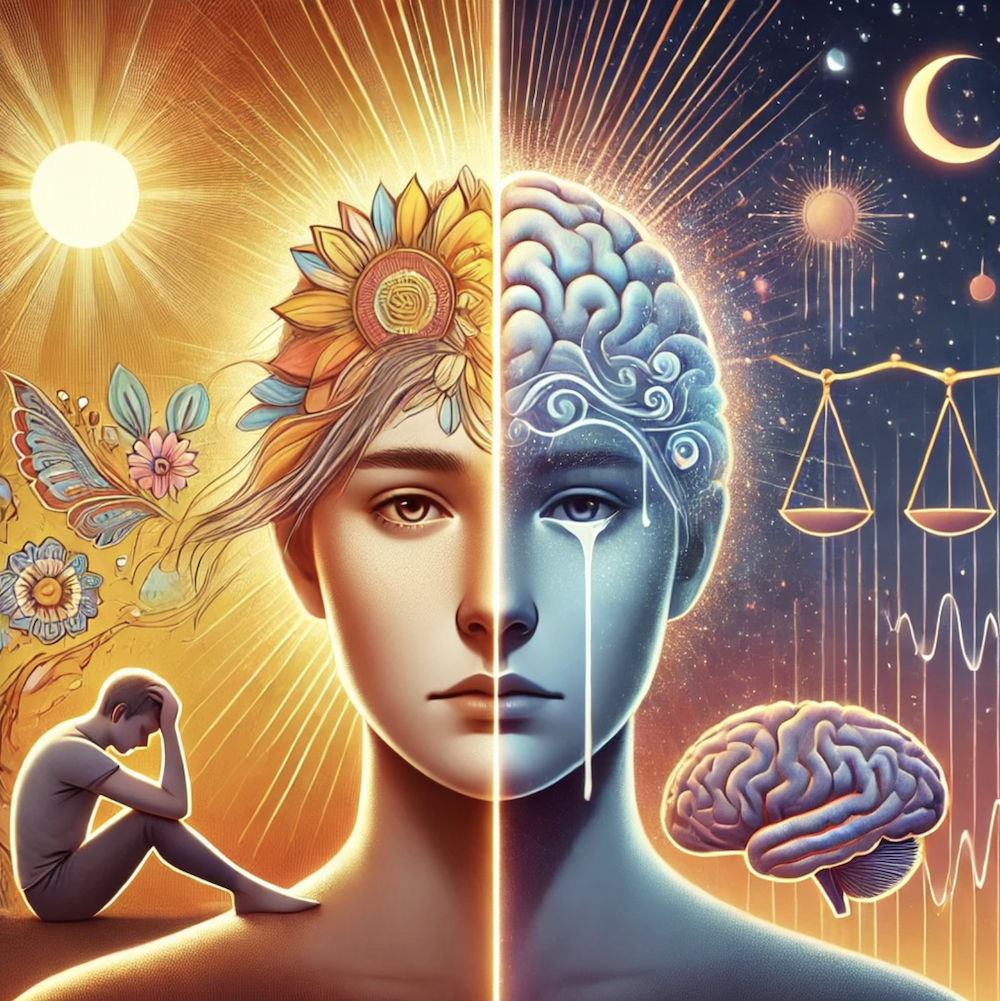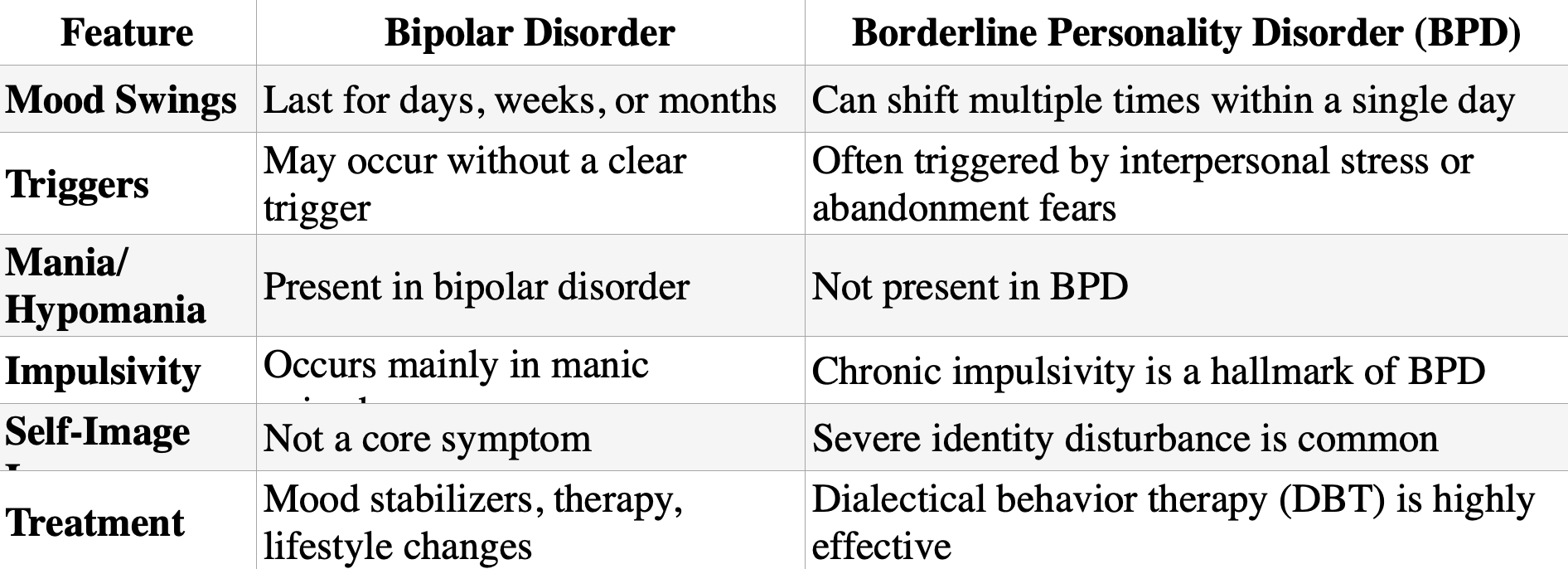
Bipolar disorder is a complex mental health condition characterized by extreme mood swings that range from manic (or hypomanic) highs to depressive lows. These episodes can last for days, weeks, or even months, significantly impacting daily life, relationships, and overall well-being.
Recognizing the Symptoms of Bipolar Disorder
Symptoms vary depending on whether someone is experiencing mania, hypomania, or depression. However, some symptoms persist across episodes, including:
- Extreme mood swings
- Difficulty concentrating or making decisions
- Changes in sleep patterns (insomnia or reduced need for sleep)
- Decreased appetite
Manic Symptoms
During a manic episode, individuals may feel an overwhelming sense of euphoria, high energy, and confidence. Manic symptoms include:
- Feeling overly happy or excited
- High energy and restlessness
- Talking excessively and quickly
- Racing thoughts
- Poor decision-making or risky behavior
- Increased sexual desire
- Sudden, intense irritability
- Delusions or hallucinations (in severe cases)
A hypomanic episode is a milder version of mania—there is still increased energy and activity, but without delusions or extreme impulsivity.
Depressive Symptoms
A depressive episode in bipolar disorder closely resembles clinical depression and can include:
- Feelings of sadness, emptiness, or hopelessness
- Loss of interest in enjoyable activities
- Low energy and fatigue
- Slowed speech and movement
- Decreased libido
- Anxiety or restlessness
- Suicidal thoughts (suicidal ideation)
Bipolar Disorder vs. Borderline Personality Disorder (BPD)
Bipolar disorder and borderline personality disorder (BPD) both involve mood instability, but they differ in how and when mood swings occur.
Key Differences

Research Insights
Studies indicate that bipolar disorder has a strong genetic and neurochemical component, whereas BPD is often linked to childhood trauma or attachment issues (American Psychiatric Association, 2020). Both conditions benefit from therapy, but medication is more effective for bipolar disorder.
Bipolar Disorder in Children and Teens
Diagnosing bipolar disorder in young people can be challenging, as symptoms often overlap with ADHD, oppositional defiant disorder (ODD), and normal developmental mood swings. If your child shows persistent symptoms, a mental health professional can help provide clarity.
Types of Bipolar Disorder
There are several subtypes of bipolar disorder:
- Bipolar I – Characterized by full manic episodes lasting at least a week, often alternating with depressive episodes.
- Bipolar II – Includes hypomanic episodes (less severe than full mania) along with depressive episodes.
- Cyclothymic Disorder – Milder but chronic mood instability, with numerous hypomanic and depressive symptoms lasting at least two years.
What Causes Bipolar Disorder?
There is no single cause of bipolar disorder, but several factors contribute:
- Biochemistry – Imbalances in neurotransmitters (dopamine, serotonin, and norepinephrine) have been linked to mood instability (Grande et al., 2016).
- Genetics – A family history of bipolar disorder increases the risk (Nurnberger & Foroud, 2000).
- Environmental Triggers – Stress, trauma, substance use, and sleep disruptions can trigger episodes.
While genetics can play a role, bipolar disorder is not solely hereditary—many people develop the condition without a family history.
Managing and Treating Bipolar Disorder
Treatment typically includes a combination of medication, therapy, and lifestyle changes:
1. Medication
- Mood stabilizers (e.g., lithium, valproate)
- Antipsychotics (e.g., quetiapine, olanzapine)
- Antidepressants (often used with mood stabilizers to prevent manic episodes)
- Anti-anxiety medications (for acute stress and sleep issues)
Severe cases may benefit from electroconvulsive therapy (ECT) or transcranial magnetic stimulation (TMS).
2. Psychotherapy
- Cognitive Behavioral Therapy (CBT) – Helps challenge negative thought patterns.
- Interpersonal and Social Rhythm Therapy (IPSRT) – Encourages stable daily routines to prevent mood episodes.
- Psychoeducation – Helps individuals and families understand and manage symptoms effectively.
3. Lifestyle Adjustments
While lifestyle changes alone cannot replace medical treatment, they can complement it:
- Following a structured daily routine
- Prioritizing sleep, nutrition, and regular exercise
- Avoiding alcohol and drugs
- Tracking mood changes and symptoms in a journal
- Building supportive relationships
Seeking a Diagnosis
If you identify with symptoms of bipolar disorder, consult a mental health professional. Only a licensed clinician can provide an accurate diagnosis through psychological evaluation and medical history analysis.
Steps to Diagnosis:
- Consult a primary care doctor – Rule out medical conditions that mimic bipolar disorder.
- Meet with a psychiatrist or psychologist – They can conduct clinical assessments.
- Keep track of mood patterns – Document sleep, energy levels, and emotional shifts.
Final Thoughts
Bipolar disorder is a lifelong condition, but with the right treatment, individuals can lead stable, fulfilling lives. Understanding the difference between bipolar disorder and borderline personality disorder is essential for accurate diagnosis and treatment.
If you or a loved one are struggling with mood instability, don’t hesitate to seek professional support—help is available, and recovery is possible.


